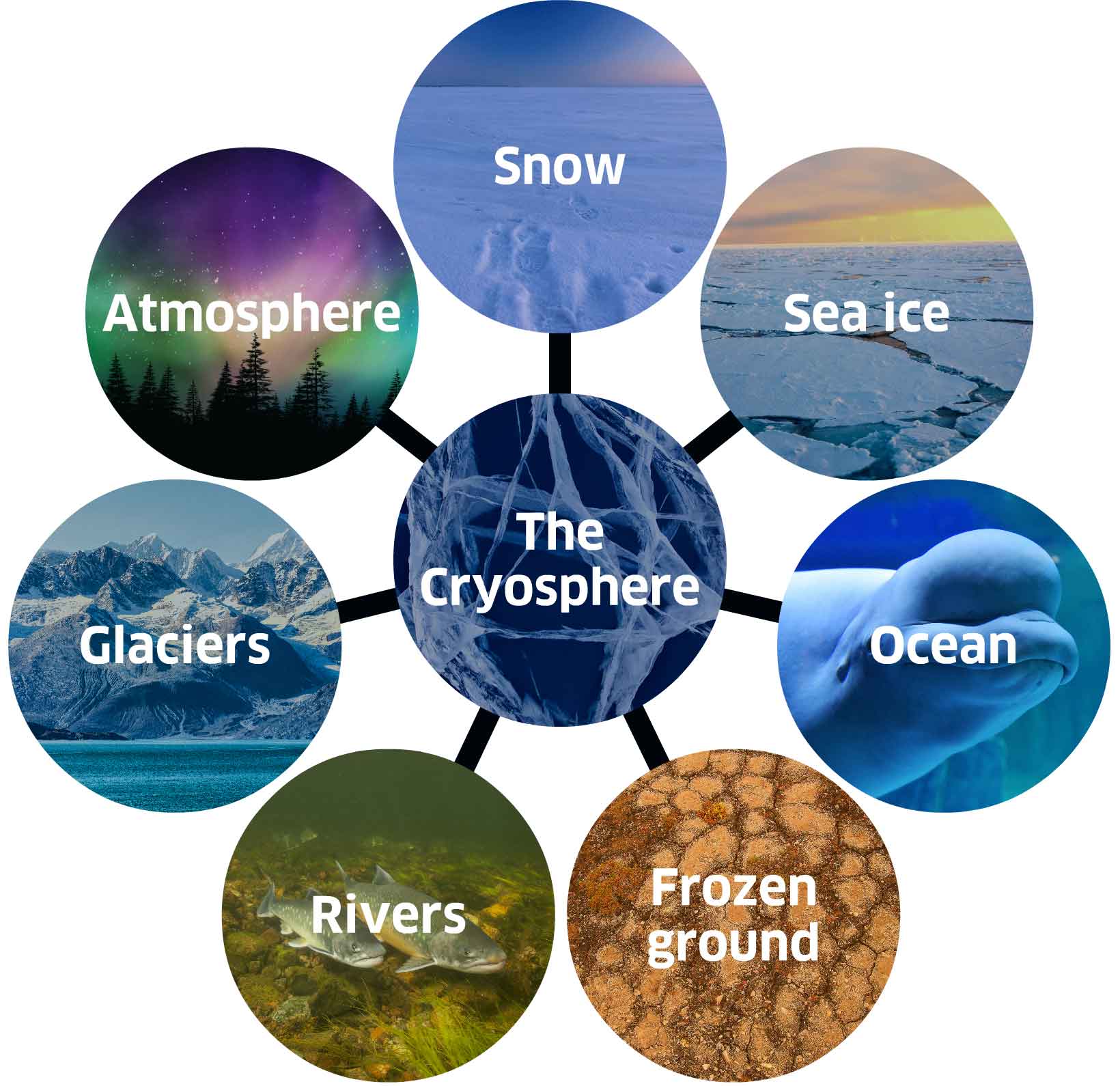The term ‘cryo’ comes from the Greek word ‘kryo’, meaning cold. The cryosphere is the frozen water part of the earth’s hydrological system.
Defining the Cryosphere
The cryosphere involves a series of frozen elements: Snow + Sea Ice + Ice within Frozen Ground (Permafrost) + Ice on Lakes and Rivers + Ice over Land (Glaciers/Ice Sheets) = The Cryosphere
The absence of liquid water means that there is little vegetation, and those plant species which can survive tend to grow close to the ground and incredibly slowly.
The Arctic cryosphere is explored at SWIPA (Snow, Water, Ice and Permafrost in the Arctic). The SWIPA website has been developed as part of AMAP (the Arctic Monitoring and Assessment Project), a long term project to monitor change in the Arctic region. Increased warming as a result of climate change may affect the frozen regions of the cryosphere first, before the effects spread to other parts of the globe.

SWIPA 2021 report
A 2021 report by SWIPA, summarised in this document. It suggests that the Arctic is becoming a warmer, wetter and more variable environment with implications for people, resources and ecosystems worldwide.
The report suggests that:
- There has been an increase in extreme high temperatures and a decline in extreme cold events
- Annual mean air surface temperatures in the Arctic will rise to 3.3-10°C above the 1985-2014 average by 2100
- Climate change is affecting the subsistence harvest-based livelihoods and food security of small Arctic communities —especially Indigenous communities
- Unique ecosystems, such as those associated with multi-year sea ice or millennia-old ice shelves, are at risk and some are vanishing
- Some species will benefit, for example the orca, which is extending its range into the new open water areas in the Arctic and is competing with the polar bear as a top predator.
The key message of the report is that human actions over the next 50 years will make a real difference to the extent of change in the cryosphere and beyond.
The 2011 BBC series ‘Frozen Planet’ raised awareness of the polar regions of the Earth. Scenes depicting the impacts of the loss of sea ice on polar bears and their ability to hunt were particularly memorable. Watch the clip of Frozen Planet.
In 2022, ‘Frozen Planet II‘ was released which not only revisited the effects of a warming climate is having on the polar regions but also looked at potential solutions. Watch this clip of Frozen Planet II to see what was said.
The 2021 SWIPA report has highlighted further examples of the sort of changes that may take place within our lifetime. Explore the Cryosphere section of this website to discover more.
Find out more about the cryosphere
- Human actions in areas far from the Arctic will determine the future response of the cryosphere to climate change. What sort of actions might these be?
- Write a report on the effects of climate change and the response of the cryosphere to these changes on the people living in the Arctic and their environment.
- Walt Meier from the University of Colorado has called the Arctic a ‘canary in a coalmine’. What does he mean by this?
- Read the SWIPA report
- Visit BBC’s Frozen Planet